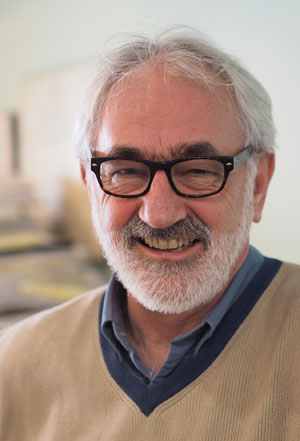After weeks of discussion, the group leading the reorganization of the Greater Toronto Area’s legal clinics has released its detailed plan for creating five organizations across the region.

The report envisions reducing 16 of the area’s legal clinics to five or six organizations of 33 staff offering core services that are missing in some places today. Currently, clinics on average have a staff of eight. If the recommendations become reality, the Toronto catchment areas will be in the northwest, the Scarborough and Don Mills areas, and the southern part of the city, according to the report released last week.
The plan is to have three or four clinics in Toronto and a clinic in each of Peel and York regions. There would also be smaller “access points” where clients could receive services in their neighbourhoods. While the proposal has met with some criticism, at least one clinic is welcoming the new model. Dennis Bailey, executive director of the Community Legal Clinic of York Region, says the report acknowledges skyrocketing poverty levels in the suburban areas. For years, his clinic of 10 staff members has been short of the resources necessary to provide the services the community needs, he says.
“From our perspective, this is exactly what needs to happen,” he notes.
The existing clinics are too small, have overwhelmed staff, offer services in too few areas of the law, and are unable to meet emerging needs, according to the report.
“While clinics have provided effective legal services for decades, they find themselves facing big challenges, which the structure of the current system cannot help them address,” the report’s executive summary says.
“Demand for clinic service has been growing in volume and complexity for many years; clinic catchment areas and resource allocations do not reflect the changed or changing needs of local communities, making it impossible for clinic staff to respond in adequate ways.”
The new model would have teams of caseworkers working in different areas of the law, including a team of five assigned to social assistance work; two to Ontario disability support program matters; four to housing; and one to immigration cases. The proposal also provides for a workers’ rights caseworker and four advice caseworkers.
A team leader who works under an executive director will oversee each group. The organizations can’t implement the new service model under the current structure because clinics are “too small to realize most of the transformational objectives,” according to the executive summary.
“Simply making existing clinics bigger by adding new staff does not transform clinics and does not address many of the issues that were identified as problematic in the system: We just have bigger clinics and catchment areas would still be anachronistic. Moreover, with bigger clinics, co-ordination amongst 16 clinics would become even more problematic than it is presently.”
The new model would include redrawing catchment areas. Where possible, they won’t straddle municipal boundaries and would be accessible through major transportation routes. No more than one clinic in Peel and York regions would be possible given the changes envisioned and the available funding, according to Jack De Klerk, one of the clinic lawyers leading the clinic transformation process.
Some clinics, however, are unhappy with the proposal. Gary Newhouse, chairman of the board at Kensington-Bellwoods Community Legal Services, says the plan for larger clinics doesn’t reflect a community-based service delivery model.
“Nothing in this report changes the views taken by Kensington-Bellwoods Community Legal Services that the mega-clinic model is seriously flawed and is not supported by the 30 principles that the project still identifies as the underpinning for transformation,” he tells
Law Times.
The plan doesn’t involve cuts to staff or legal aid funding, says De Klerk, who’s also director of legal services at Neighbourhood Legal Services. “We expect there will in fact be more staff. So this is not a process of reducing staff. We expect actually that front-line staff will be increased by almost 20 per cent.”
The reduction in the number of clinics will mean fewer executive directors and office managers. De Klerk says some of the existing leaders will likely retire upon the project’s implementation, which would allow the clinics to hire junior staff members who will work on the front lines.
The project’s steering committee will be looking for thoughts on the recommendations throughout the fall and hopes to come to a decision before the end of the year. “Acceptance of the vision report by the GTA clinics does not bind them to the changes recommended in the report — it is an acceptance of the vision that we wish to attain,” the committee said in the executive summary.
“Once there is agreement on the vision, a transition plan will be developed setting out what needs to be done to implement the vision.”

 The report envisions reducing 16 of the area’s legal clinics to five or six organizations of 33 staff offering core services that are missing in some places today. Currently, clinics on average have a staff of eight. If the recommendations become reality, the Toronto catchment areas will be in the northwest, the Scarborough and Don Mills areas, and the southern part of the city, according to the report released last week.
The report envisions reducing 16 of the area’s legal clinics to five or six organizations of 33 staff offering core services that are missing in some places today. Currently, clinics on average have a staff of eight. If the recommendations become reality, the Toronto catchment areas will be in the northwest, the Scarborough and Don Mills areas, and the southern part of the city, according to the report released last week.